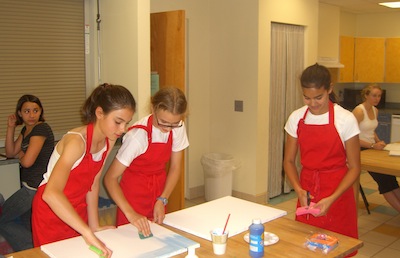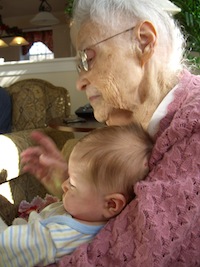About Art for Hospice
 Art for Hospice (a 501(c)(3) non-profit corporation) raises funds to purchase blank art canvases, which are then distributed to participating schools and museums. School children, ranging in age from pre-school to grad school, are asked to work in groups to create a unique piece of art designed for individuals suffering from terminal illnesses or other debilitating conditions. Once completed, Art for Hospice then distributes the art to participating Hospice centers, VA hospitals, and/or nursing homes across the nation.
Art for Hospice (a 501(c)(3) non-profit corporation) raises funds to purchase blank art canvases, which are then distributed to participating schools and museums. School children, ranging in age from pre-school to grad school, are asked to work in groups to create a unique piece of art designed for individuals suffering from terminal illnesses or other debilitating conditions. Once completed, Art for Hospice then distributes the art to participating Hospice centers, VA hospitals, and/or nursing homes across the nation.
Since its inception, Art for Hospice has raised just over fifteen thousand dollars in order to distribute more than 5,000 pieces of art to participating organizations. The president and founder of the organization, Emma Astrike-Davis, coordinates the activities of Art for Hospice, with the help of vice-president, Evan Astrike-Davis. However, it is the countless volunteer students, art teachers, hospice workers, and other supporters that make this organization a success.
 How Art for Hospice began. In May of 2008, twelve-year-old Emma, a 6th grader at Montessori Community School (MCS) in Durham, N.C., served as “head of school for a day.” Tradition dictated that she extend recess, limit homework, etc., but Emma wanted to do more. Inspired by visits with her great-grandmother, Emma asked her entire school to make artwork to brighten the rooms of hospice patients. She invited hospice social workers to the school to talk about their work, she convinced an art supply store to sell her blank canvases at cost, and she coordinated the efforts of over two hundred MCS students and teachers, who collaborated to make 25 wonderful pieces of art in the First Annual Art for Hospice Day! Dave Carman, the actual head of school at MCS at the time said that “Emma was a remarkable person to work with. I wish we could credibly take credit for her spirit of service to others, but the credit clearly goes to Emma and her family. Many other kids here, who watched what took place and saw that it was satisfying, will look for the chance to make the same kind of difference when their turn comes. As it will.”
How Art for Hospice began. In May of 2008, twelve-year-old Emma, a 6th grader at Montessori Community School (MCS) in Durham, N.C., served as “head of school for a day.” Tradition dictated that she extend recess, limit homework, etc., but Emma wanted to do more. Inspired by visits with her great-grandmother, Emma asked her entire school to make artwork to brighten the rooms of hospice patients. She invited hospice social workers to the school to talk about their work, she convinced an art supply store to sell her blank canvases at cost, and she coordinated the efforts of over two hundred MCS students and teachers, who collaborated to make 25 wonderful pieces of art in the First Annual Art for Hospice Day! Dave Carman, the actual head of school at MCS at the time said that “Emma was a remarkable person to work with. I wish we could credibly take credit for her spirit of service to others, but the credit clearly goes to Emma and her family. Many other kids here, who watched what took place and saw that it was satisfying, will look for the chance to make the same kind of difference when their turn comes. As it will.”
